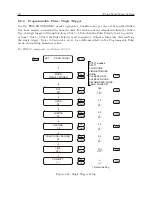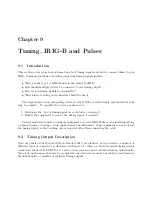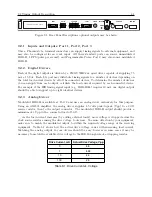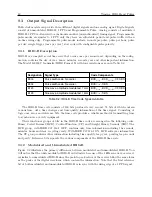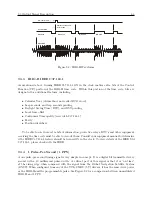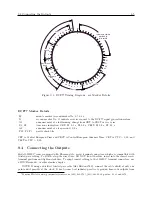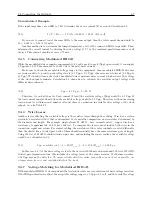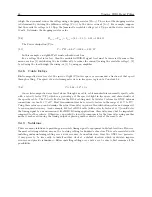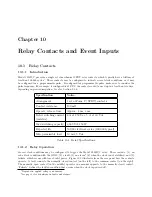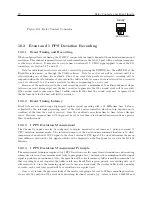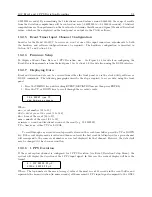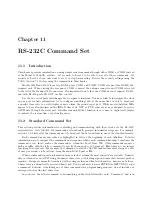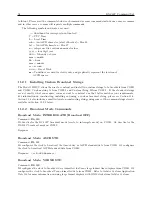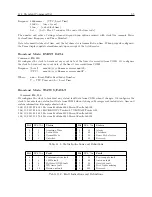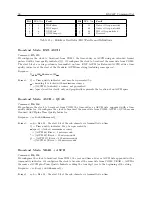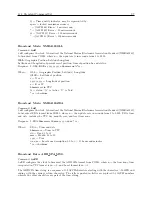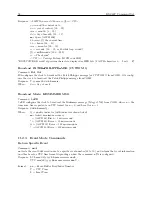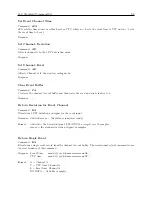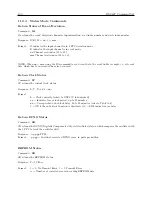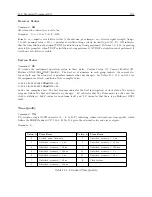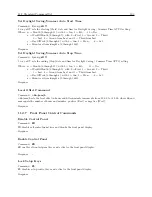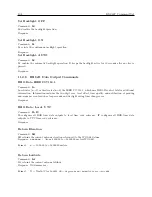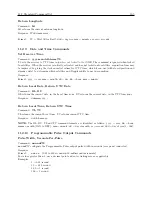
90
Relay Contacts and Event Inputs
Figure 10.1: Relay Contact Connector
RELAY
(NC NO COM)
10.2
Event and 1 PPS Deviation Recording
10.2.1
Event Timing and Recording
When configured for event timing, the 1201B/C can provide one input channel with one hundred nanosecond
resolution. This channel is primarily used for synchronization via the RS-232 port with an external computer
or other type of device. It may also be used to time an external 5 V CMOS signal applied to one of the I/O
connectors; see Section 5.2.7 and 8.10.
Data for individual recorded events can be recalled by pressing the TIMING key, then ENTER at the
Event/Deviation menu, or through the Utility software. Data for each event will be retained until it is
retrieved using one of these two methods. Thus, if no event data points are retrieved, recording will be
suspended when the total number of of events in the buffer is full. As soon as data is retrieved for a recorded
event, its address (1 to 25) is made available for data corresponding to a new event.
Because of the method used in the event recording circuit, a minimum of 11 milliseconds must elapse
between one event (rising edge) and the next, in order to guarantee that the second event will be recorded.
If the second event occurs sooner than 11 milliseconds after the first, the second event may be ignored, but
the the time data for the first will still be recorded.
10.2.2
Event Timing Latency
Event data are recorded using a high-speed capture circuit operating with a 32 MHz time base. Latency
is limited by the interrupt processing speed of the clock’s microcontroller, which in turn depends on its
workload at the time the event is received. Since the workload varies from time to time, latency likewise
varies. However, response time will, in general, never be less than a few hundred microseconds nor greater
than 10 milliseconds.
10.2.3
1 PPS Deviation Measurement
The Channel A input can also be configured to display measured event times as 1 pulse-per-second (1
PPS) deviation measurements. The intended purpose of the deviation measurement function is to allow
comparison of an external 1 PPS signal to the clock’s internal 1 PPS signal. The clock determines the mean
time difference between the two signals, which can be displayed on the front panel or read via the RS-232
Interface.
10.2.4
1 PPS Deviation Measurement Principle
The measurement technique employed for 1 PPS Deviation uses the same time determination and recording
scheme used for event time measurement (refer to paragraph above), but makes the assumption that the input
signal is periodic and continuous. Also, the operation of the circular memory buffer is modified somewhat, in
that recording does not stop after the buffer is full; new Event Data is given priority over existing data, and
will overwrite it. Since the incoming signal occurs once per second and the circular buffer holds a number
of events, each event time record will be overwritten on a regular basis.
Once every second, the processor looks at the most recent group of 16 events. When computing deviation,
it uses only the portion of the event data describing fractional seconds (e.g. values between 0.0000000 and
Summary of Contents for 1201B
Page 4: ...iv ...
Page 153: ...B 7 Four Fiber Optic Outputs 135 Figure B 4 Jumper Locations ...

